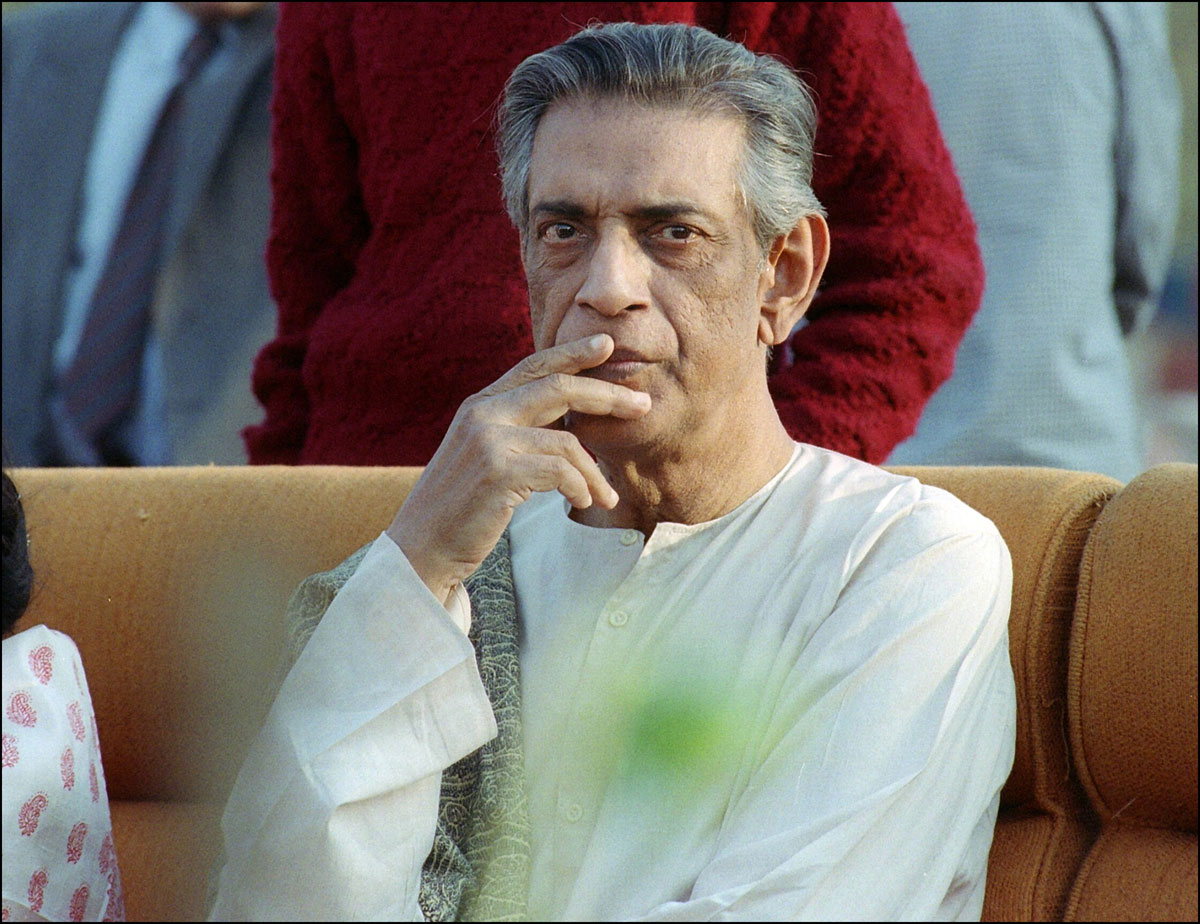How Ray Used Optical Illusion to Create a ‘Real’ Train in ‘Nayak’
Portrait taken Feb. 2, 1989, in Calcutta of Satyajit Ray during the ceremony where he was to be made a member the Legion of Honor by the French President Frantois Mitterrand. His first film was “On the Road” (1954) and its international success at the Cannes Film Festival allowed him to complete the trilogy with “The Unvanquished” (1956) and “The World of Apu” (1959). Ray continued as India’s leading film maker until he died on April 23, 1992. His later productions include “The Kingdom of Diamonds” (1980), “Pickoo” (1982), and “The Home and The World” (1984). He received an Academy Lifetime Achievement Award in 1991. (FAGET/AFP/Getty Images)
The train, one of the prime attractions of Satyajit Ray’s “Nayak,” was created in a studio and the master filmmaker used optical illusion to look it swing like a real one, says his son Sandip.
“Nayak” is one of Ray’s most popular films starring Uttam Kumar and Sharmila Tagore.
“Many of those who watched ‘Nayak’ believe that the film was made on a real train. The truth is that the train was made in a studio by Bansi Chandragupta, the film’s art director. He took great pains to make the set,” says Sandip.
He was 12 years old when his father started working on “Nayak” in 1965.
“He (Bansi) followed the plans of air-conditioned vestibule express which he acquired from the workshop of the Indian Railways at Liluah near Kolkata. Baba told him that the train should be made in such a manner that it could swing lightly like a real train,” he recalls.
Initially, Bansi planned to place the train on tires but then realized that the tires were not strong enough to carry the heavy weight of the train.
“In fact, it was so heavy that it could not be swung at all. That upset Bansi uncle. But Baba found a way out of the problem. He instructed one of his unit members to swing a canteen hanging on the train which gave an optical illusion of the swinging of the train. The train looked all the more real because of the addition of the sounds of a train running to the swinging,” says Sandip.
Now HarperCollins has brought out a novelization of the film. Titled “Nayak: The Hero,” it is penned by Bhaskar Chattopadhyay.
“The film ‘Nayak’ is very important in my career as an actor. This novelization of its brilliant original screenplay, 50 years after the film was made, is testimony to Satyajit Ray’s enduring genius as a storyteller,” says Sharmila Tagore.
In the book’s foreword, Sandip also mentions that Tagore was dating Tiger Pataudi when she worked for “Nayak.”
“Tiger would come to see the shoots. Sometimes, he came to pick up Rinku-di (Tagore) after pack-up,” he says.
According to Sandip, watching his father at work was great fun, but seeing the captain of the Indian cricket team was an extra attraction for him to go to the sets of “Nayak.”
Sandip also recalls that his father did not want Uttam Kumar to wear make-up when he began shooting.
The first day’s shoot took place in the house of Jit Paul, the patriarch of the Apeejay group, in the posh Alipur area of Kolkata inhabited by the city’s foremost industrialists and businessmen, he says.
“Uttam Kumar was visibly upset. He must have been worried about how he would look on screen without any make-up on as he still had the pockmarks on his face caused by chickenpox he had recently suffered from,” he writes.
But Ray reassured him, saying he would give him some make-up during the later stages of shooting.
Based on Ray’s own screenplay, “Nayak” is a nuanced portrait of the life of a cinema superstar that is as powerful today as it was 50 years ago.
Matinee idol Arindam Mukherjee (Uttam Kumar) is on his way from Calcutta to Delhi to receive a national award. In the restaurant car of the train, he encounters Aditi Sengupta (Tagore), who edits ‘Adhunika,’ a magazine for modern women.
Aditi is not star-struck like her co-passengers, but decides to interview Arindam to gain more subscribers for her magazine.
During the conversation, which unfolds over the next twenty-four hours, Arindam slowly sheds his carefully put together image of glamor and easy living, revealing his insecurities, fears and haunting regrets, and a phantasmagoria of old relationships, severed friendships and betrayals engulfs him.
Aditi too lets her guard down and changes from the cold journalist to a confidant and friend of the hero.


